Key takeaways
- Version control, particularly through tools like Git and GitHub, enhances collaboration, creativity, and project management by tracking code changes over time.
- Key features of GitHub include repositories for project files, branches for independent feature development, and pull requests for code reviews, which all facilitate effective teamwork.
- Utilizing GitHub provides a centralized backup for projects, promotes community engagement, and accelerates learning through collaborative efforts.
- Effective usage tips include committing frequently, using clear commit messages, and leveraging branches for experimentation without affecting the main codebase.
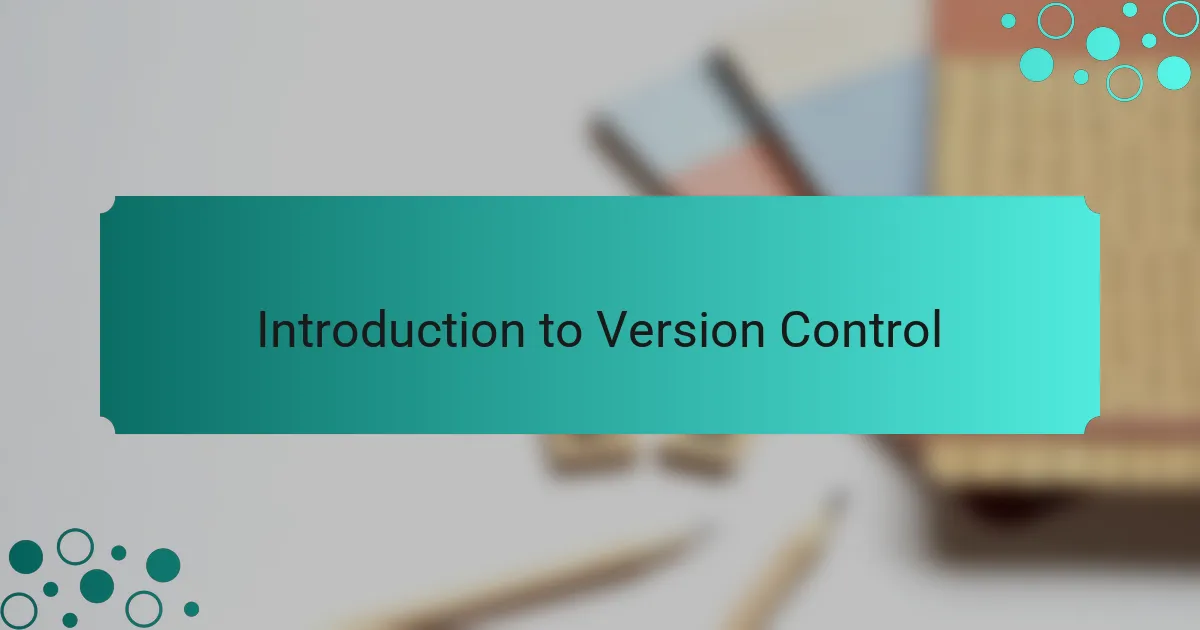
Introduction to version control
Version control is a vital tool for anyone working in programming, allowing you to track changes to your code over time. I vividly remember the first time I lost hours of work due to a coding error I couldn’t trace. It made me realize the importance of version control—not just for teamwork, but for managing my own projects.
Imagine being able to experiment freely, knowing that if something goes wrong, you can simply revert to a previous version. That safety net is invigorating and encourages you to be more creative. When I first started using tools like Git, it opened up a world where I could confidently explore new ideas without the fear of irreversible mistakes.
What I find particularly fascinating is how version control acts as a time machine for your projects. You can see how your code evolves, which mirrors your growth as a developer. Isn’t it incredible to look back and see how far you’ve come, not just in the code itself but in your skills and understanding? I always urge newcomers to embrace version control—it’s not just a tool; it’s a mindset for continuous improvement.
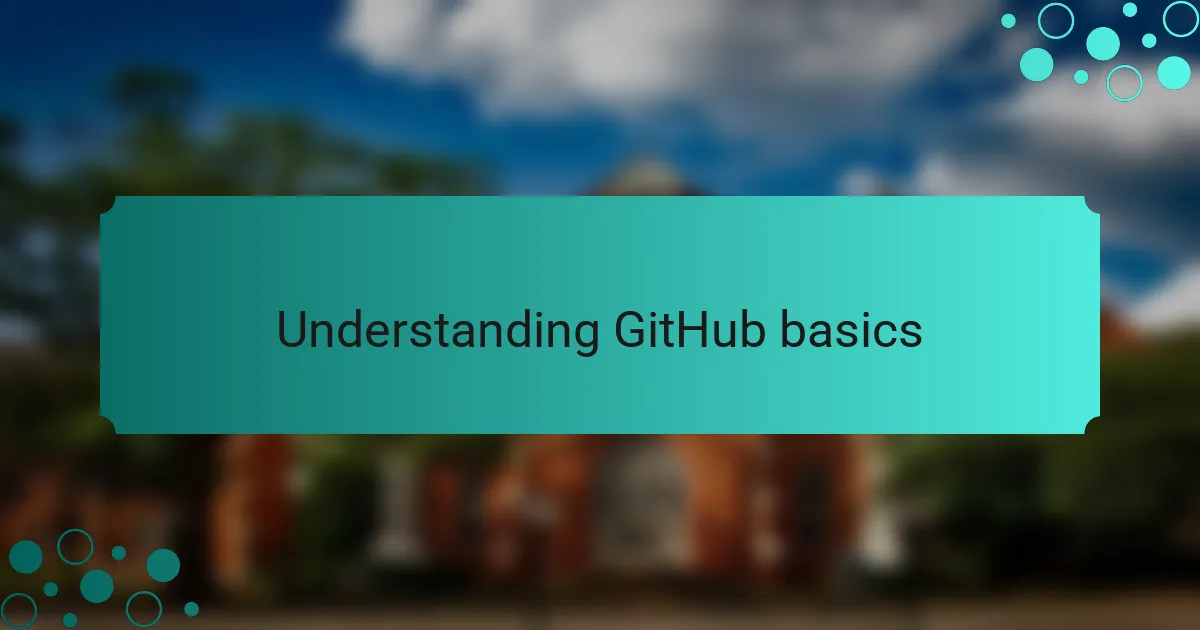
Understanding GitHub basics
When I first started using GitHub, I was a bit overwhelmed by its interface and features. However, as I navigated through its basics, I found it incredibly empowering. GitHub is essentially a platform that employs Git, a version control system that helps programmers manage and track changes in their code.
Understanding repositories is crucial; they are where all your project files live. Branches allow you to experiment with new features without altering the main codebase, which I found particularly helpful when I was testing out ideas. The commit history provides a timeline of all changes, making it simpler to revert to a previous state if something goes wrong – a lifesaver in my experience.
Here’s a simple comparison of key concepts within GitHub:
| Feature | Description |
|---|---|
| Repository | A project folder to store your code and files. |
| Branch | A copy of the code to work on new features independently. |
| Commit | Saving changes and creating a historical record of your project. |
| Pull Request | A request to merge code changes from one branch to another. |
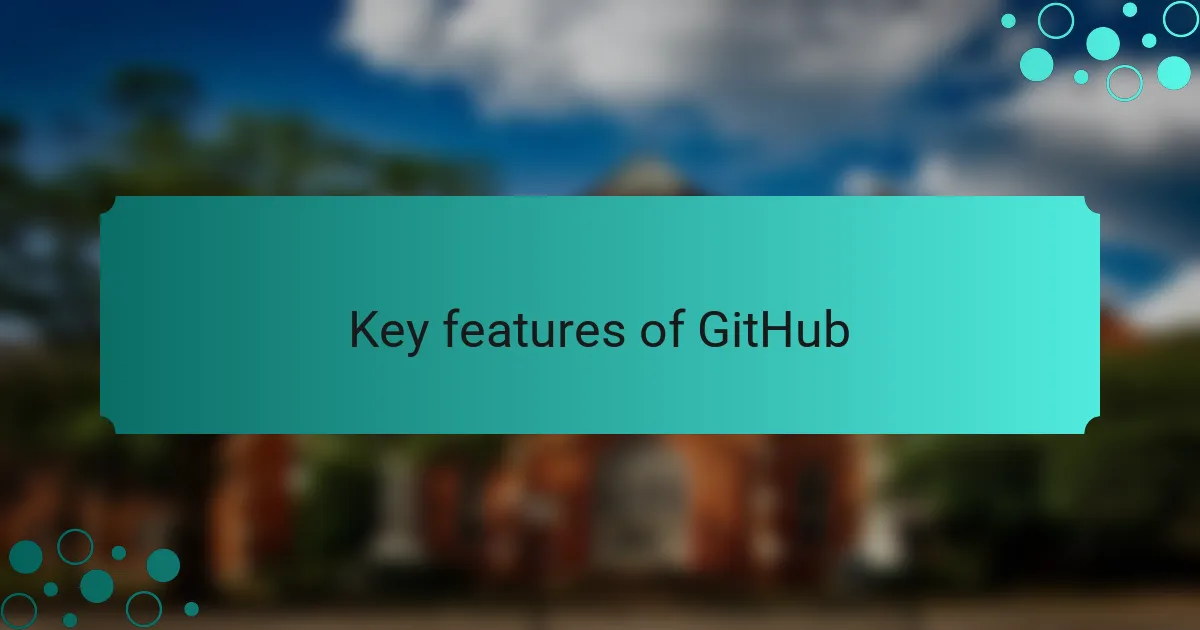
Key features of GitHub
When I think about GitHub, several key features stand out to me that make it a powerful tool for version control. One of the main aspects I find incredibly helpful is its collaborative nature. I vividly remember a project I worked on with a friend. We both contributed code from different locations, and GitHub made it seamless to merge our changes without stepping on each other’s toes. This ease of collaboration gives me confidence that we can work together effectively, even if we’re miles apart.
Another feature that I appreciate is the pull request system. It allows for code review before changes are made to the main branch. This isn’t just about catching bugs; it’s an opportunity for learning and sharing knowledge within a team. I’ve had instances where a simple suggestion from a review helped me write better code. Here are some key features of GitHub that I find indispensable:
- Collaboration Tools: Enables multiple users to work on the same project effortlessly.
- Pull Requests: Facilitates code reviews and discussions before merging changes.
- Branch Management: Allows developers to work on features in isolation without affecting the main project.
- Issues Tracking: Helps in managing bugs and feature requests effectively.
- Version History: Provides a complete timeline of project changes for easy review and rollback if necessary.
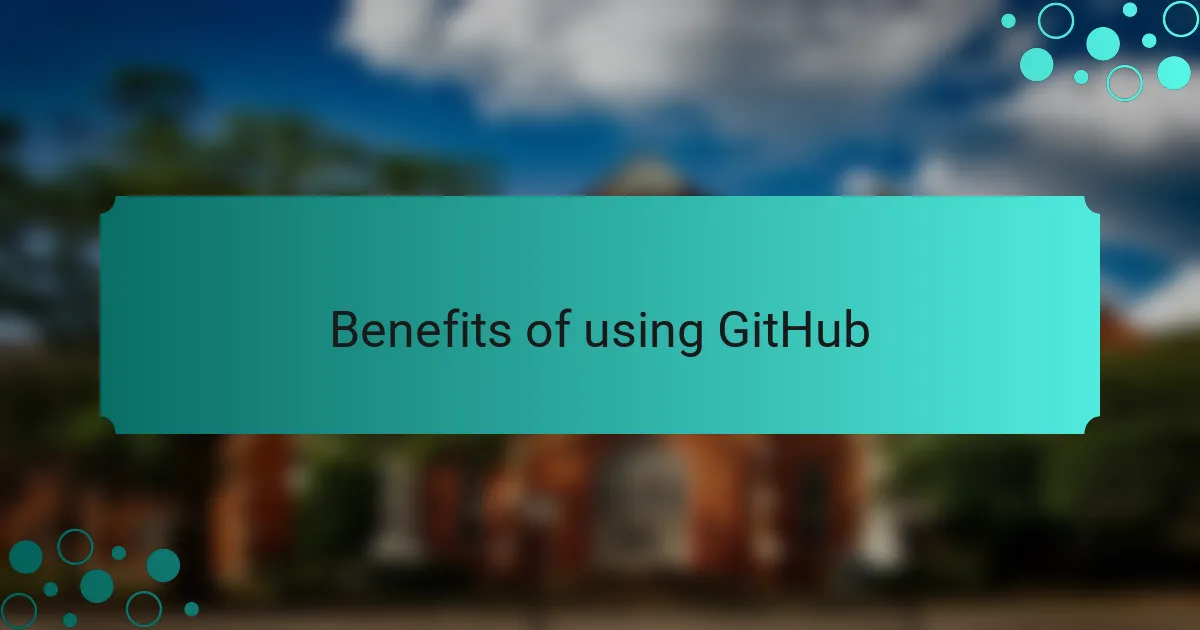
Benefits of using GitHub
One of the standout benefits of using GitHub for version control is its collaborative nature. I recall a project where I teamed up with several developers from around the globe. We were able to work simultaneously on different features, seamlessly merging our changes without stepping on each other’s toes. This collaborative environment not only boosted our productivity but also fostered a sense of community and learning.
GitHub isn’t just a repository; it’s a powerful tool that supports the entire development lifecycle. From tracking issues to reviewing code, it helps streamline processes, making project management smoother than I ever expected. Plus, knowing that my work is backed up in the cloud gives me peace of mind—I’ve had my fair share of local disasters, and this has saved me more than once.
Benefits of using GitHub:
– Collaboration: Work with others simultaneously, preventing conflicts.
– Version Tracking: Easily track changes and revert to previous versions when necessary.
– Centralized Backup: Keep your projects safe and secure in the cloud.
– Community Engagement: Join discussions, learn from others, and contribute to open-source projects.
– Integrated Tools: Utilize features like issue tracking, pull requests, and project boards to enhance workflow.
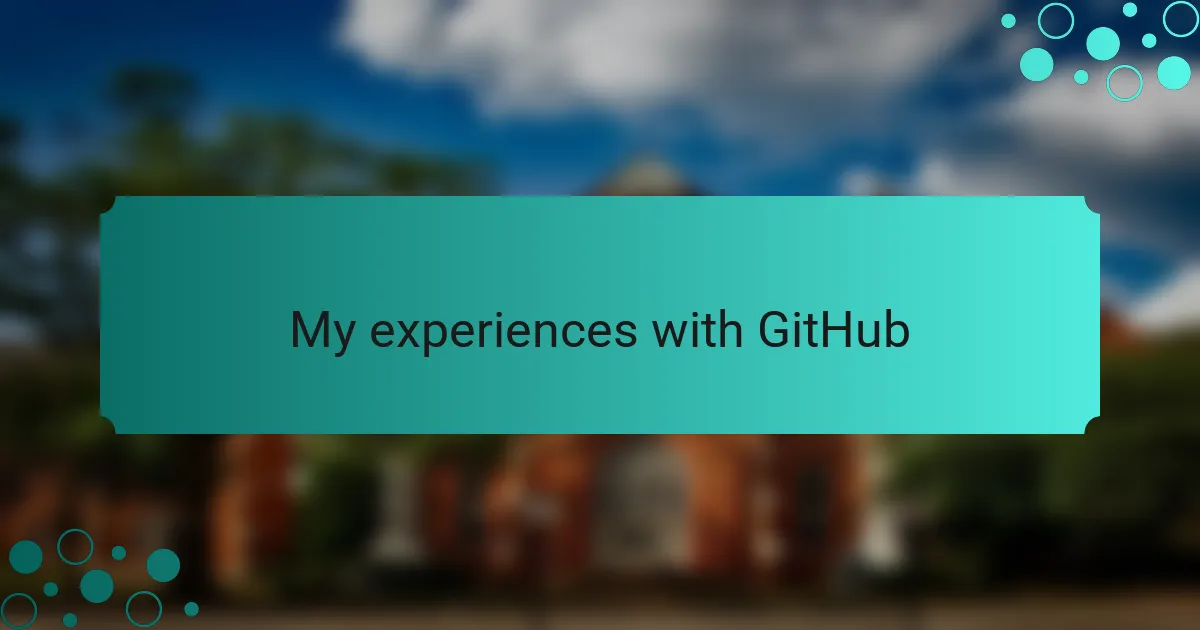
My experiences with GitHub
Using GitHub has transformed the way I approach version control in my projects. Early on, I remember feeling overwhelmed by the command line, but once I started using GitHub, everything became much more manageable. The ability to track changes and collaborate with others has not only saved me countless hours but also greatly enhanced my coding skills through peer reviews.
One memorable experience was when I collaborated on an open-source project. The sense of community was inspiring, and I felt a great deal of pride when my contributions were merged into the main project. It’s not just about managing code; it’s about being part of a larger collaborative effort that makes programming so much more enjoyable.
Here’s a comparison of some GitHub features that I find particularly beneficial:
| Feature | Benefits |
|---|---|
| Version Control | Easily track changes and revert to previous versions |
| Collaboration | Work with others seamlessly, sharing ideas and code |
| Documentation | Create comprehensive project documentation using Markdown |

Tips for effective usage of GitHub
When using GitHub, one of the best tips I can share is to commit early and often. I’ve learned that making regular commits not only keeps my projects organized but also helps me track changes more effectively. This way, if an error pops up, I can easily pinpoint what went wrong.
Another effective practice is to write clear commit messages. I remember feeling frustrated when I revisited old commits with cryptic messages. Now, I make it a habit to explain what I changed and why. This clarity has improved my workflow immensely, especially when collaborating with others.
Lastly, take advantage of branches in your projects. I often create separate branches for new features or experimental work. This keeps my main codebase stable while allowing me to explore new ideas without fear of breaking something important.
| Tip | Description |
|---|---|
| Commit Early and Often | Regular commits help track changes and make debugging easier. |
| Clear Commit Messages | Explain your changes to improve understanding for yourself and others. |
| Utilize Branches | Keep your main code stable while experimenting with new features. |
